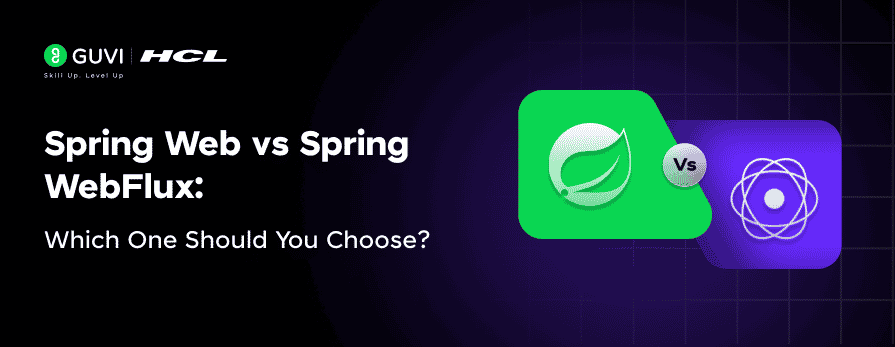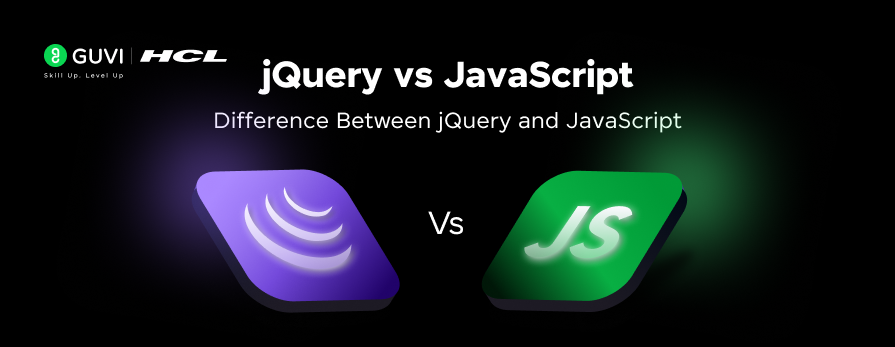
Spring Web vs Spring WebFlux: Which One Should You Choose?
Sep 04, 2025 2 Min Read 2498 Views
(Last Updated)
In the modern landscape of web development, high-performance and scalable applications are in demand. With this evolution, Spring Framework provides two powerful modules for building web applications: Spring Web (Servlet-based) and Spring WebFlux (Reactive-based).
Understanding their core differences is essential for choosing the right tool for your next Java project. That is what this article covers in detail. So, without further ado, let us get started!
Table of contents
- What is Spring Web?
- Key Features:
- Limitations:
- What is Spring WebFlux?
- Key Features:
- Learning Curve:
- Spring Web vs Spring WebFlux: Quick Comparison
- When to Use What?
- Conclusion
What is Spring Web?
Spring Web, part of the traditional Spring MVC stack, is built on the Servlet API and follows a synchronous and blocking request-response model.
Key Features:
- Based on Servlet 3.1+ (Tomcat, Jetty, etc.)
- Follows a thread-per-request model.
- Ideal for applications with predictable workloads and short-lived tasks.
- Rich ecosystem with mature support for REST, JSP, Thymeleaf, etc.
Limitations:
- Scalability may suffer under heavy concurrent loads due to thread blocking.
- Not suitable for real-time or streaming data scenarios.
Also Read: Spring Boot Project Step-by-Step Guide
What is Spring WebFlux?
Spring WebFlux is a fully non-blocking, reactive programming model introduced in Spring 5. It is designed to handle asynchronous data streams using Project Reactor.
Key Features:
- Uses Reactor (Mono and Flux) for reactive streams.
- Runs on Netty or Servlet containers (via adapters).
- Perfect for microservices, streaming, and real-time apps.
- Supports functional and annotation-based programming.
Learning Curve:
- Steeper due to the reactive paradigm.
- Debugging reactive code can be more complex.
Spring Web vs Spring WebFlux: Quick Comparison
| Feature | Spring Web | Spring WebFlux |
| Programming Model | Imperative | Reactive |
| Threading | One thread per request | Event loop, non-blocking |
| Scalability | Moderate | High (under concurrent load) |
| API | Servlet API | Reactive Streams API |
| Use Case | Traditional apps | Reactive, streaming apps |
| Back Pressure | Not supported | Supported |
| Performance under Load | Thread pool exhaustion | Efficient with async I/O |
When to Use What?
- Use Spring Web when:
- You’re building a traditional web app (e.g., admin dashboard, form submissions).
- Your team is familiar with imperative programming.
- You prioritize simplicity over scalability.
- Use Spring WebFlux when:
- You need non-blocking I/O (e.g., chat apps, live feeds).
- Your app will handle a large number of concurrent connections.
- You’re building a cloud-native, event-driven
If you want to know more about the Spring framework and how it works in web development, consider enrolling in HCL GUVI’s Spring Boot Online Course, which teaches you from basic to advanced features like HATEOAS and Spring Security.
Conclusion
In conclusion, choosing between Spring Web and Spring WebFlux ultimately depends on your application’s needs and your team’s expertise. If you’re developing a traditional web application with straightforward request-response cycles and prefer the familiarity of synchronous code, Spring Web remains a reliable and battle-tested choice.
However, if you’re targeting highly concurrent, event-driven, or real-time systems where scalability and responsiveness are critical, embracing the reactive power of Spring WebFlux could give your application a significant edge.
Understand your project requirements, weigh the trade-offs, and pick the tool that helps you build robust, future-ready applications.




































Did you enjoy this article?